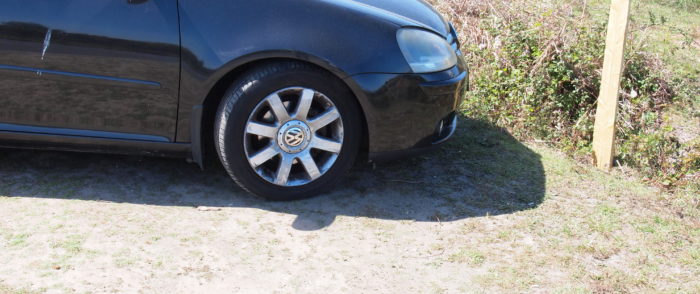Our Unprotected Landscape
We’ve all learnt a lot from the coronavirus lockdown. The extent to which people will voluntarily help complete strangers in a time of need has been hugely reassuring when there seems so much division. Lockdown has also been lightened by so many people sharing their experiences of the nature around them; noticing life in their streets, gardens, and outside their windows that had previously gone unseen and unappreciated. Quiet skies and roads have heightened appreciation of the dawn chorus. The ban on travel has shone a light on the real value of local green space, and literally got people out of their cars and back on their feet and bikes for daily exercise.
The lockdown, and its partial relaxation in May, has however also delivered harsh lessons for our landscape. These will require significant policy responses in the years ahead.
Firstly, for a protected landscape it is too reliant on its landlords to protect it.
It is understandable but unfortunate that the National Trust should use the Coronavirus Job Retention Scheme to furlough 80% of its staff. The lockdown means that the charity has lost half of its income. The risk to the charity is very real. Nevertheless, the withdrawal of staff from the New Forest does seem a disastrous false economy.
Less understandable was the decision by Forestry England, a public body, to take advantage of the Job Retention Scheme to furlough frontline staff, including New Forest keepers. It is clear that this decision was taken on financial grounds alone, despite the knowledge that their services would be essential during the lockdown. Contrast this with the actions of the District Council, redeploying staff onto the frontline at a time of need.
This appalling decision by Forestry England has, however, cast light on the worrying situation in relation to the management of the 145 square miles of Crown Land within the New Forest. It is now clear that the recent name change to “Forestry England” was much more than a rebranding. It reflects the shifting emphasis from land management and towards brand awareness and revenue generation. The focus on income from sales has intensified dramatically in recent years, with declining financial support from government. It is a matter of grave concern that the majority of the New Forest is being placed under this commercial pressure, particularly as the prospects for income are declining. We have seen this pressure over the years, in cutting the number of keepers, increasing reluctance to maintain New Forest infrastructure, and in seeking market income from the Crown cottages instead of housing those upon whom the landscape depends. The commercial deal by which Forestry England formed Camping in the Forest LLP will produce increasing tension between revenue growth and the conservation of the protected habitats affected by the sites. This £6m-a-year Forestry England joint venture views the protection of the New Forest as a “strategic risk” and a threat to its aim of “growing pitch nights”.
The Ministers Mandate sets the terms for the Forestry Commission’s management of the Crown Lands. It very clearly states that issues of financial management must never be allowed to override the first priority of conservation of the landscape. This has so clearly been allowed to wither on the vine.
At the start of the lockdown the CDA warned Forestry England that efforts to protect the landscape, particularly from damaging car parking, would need to step up when the car parks closed. No-one could have imagined that Forestry England would furlough its frontline staff when they were most needed. The damage that has been done is real and lasting. It will cost substantial amounts to repair the grazing. On top of this, parking habits 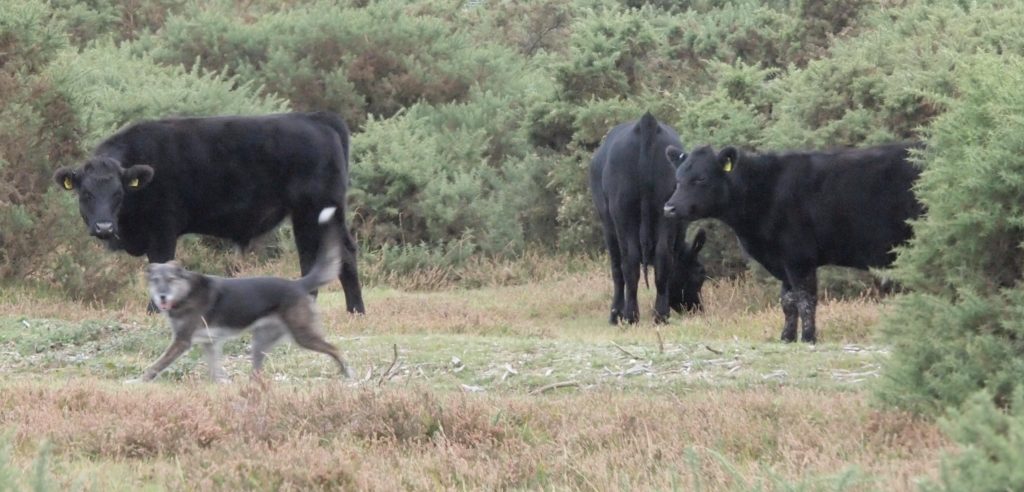 have already formed, and the need to keep 2m apart to limit virus transmission further incentivised illegal parking away from car parks. On the first weekend after the lockdown was eased, with the sun shining, reports streamed in of cars driving onto the SSSI habitats, and of barbecues, litter, out-of-control dogs, and livestock feeding all over the New Forest. There was almost no sign of enforcement activity.
have already formed, and the need to keep 2m apart to limit virus transmission further incentivised illegal parking away from car parks. On the first weekend after the lockdown was eased, with the sun shining, reports streamed in of cars driving onto the SSSI habitats, and of barbecues, litter, out-of-control dogs, and livestock feeding all over the New Forest. There was almost no sign of enforcement activity.
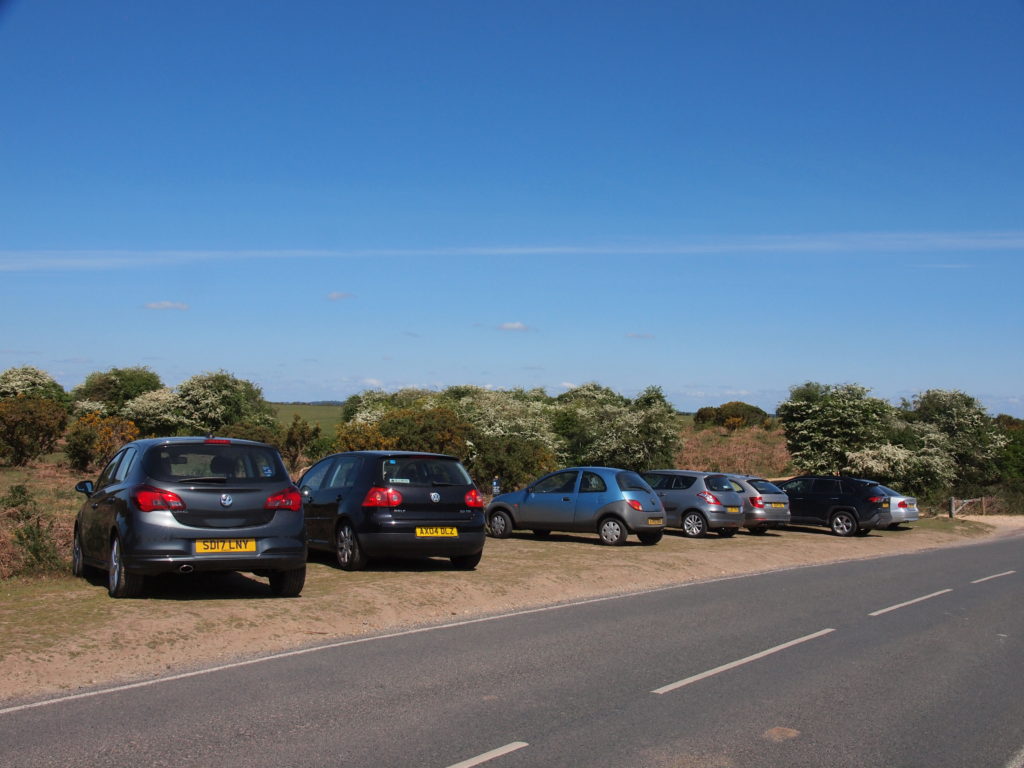 The National Park Authority also failed to step up to fill the gap. Their few rangers seem to have been kept home, creating a real vacuum of protection. Throughout the lockdown we heard other national parks sending firm messages that the landscape was “closed”. The sense of frustration from local police teams, who tried to step and cover the gaping hole of enforcement, was palpable. They could only prosecute obstruction offences, but tried hard to do what they could to protect the habitats and public safety on the open Forest.
The National Park Authority also failed to step up to fill the gap. Their few rangers seem to have been kept home, creating a real vacuum of protection. Throughout the lockdown we heard other national parks sending firm messages that the landscape was “closed”. The sense of frustration from local police teams, who tried to step and cover the gaping hole of enforcement, was palpable. They could only prosecute obstruction offences, but tried hard to do what they could to protect the habitats and public safety on the open Forest.
Secondly, the scale of the challenge in the local population is clear.
For years it has been easy to blame tourists for problems in the New Forest, and to direct education efforts towards them. The lockdown revealed a terrifying level of local indifference to this incredible lowland heath
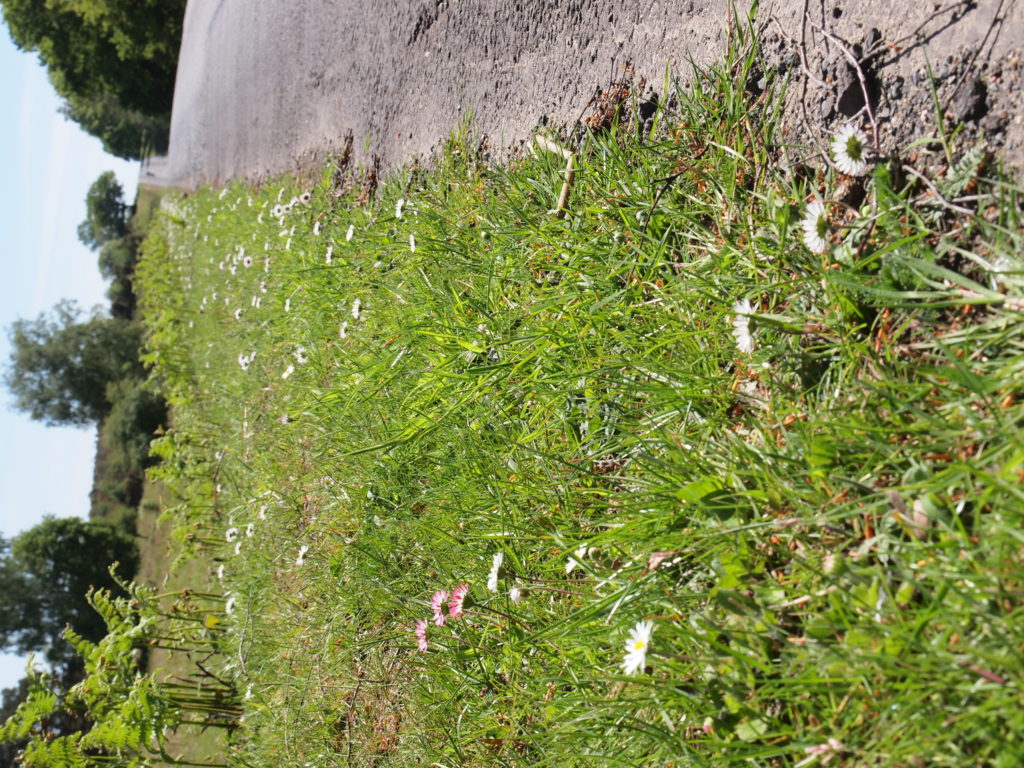
Undamaged grazed verge, Setthorns
landscape. Whilst people across Britain, living in urban flats and estates, found ways to exercise and dog walk around their homes, many in lovely leafy New Forest towns and villages produced excuses for driving into (and onto) the Forest that showed no signs at all of self-awareness or connection with the national situation. Incredibly biodiverse roadside habitats have been completely worn away by their daily parking throughout the lockdown, badly-controlled dogs have continued to worry livestock, people have carried on feeding livestock, or getting as close as they can for their photos. All done by “locals”. Indeed, many people use “being local” as an excuse for these illegal activities. If people who choose to live in the New Forest area cannot appreciate the rare habitats, species and cultural heritage from which they benefit every day, then there can surely be little hope for educating visitors? People will copy what the local people do. What people see happening is far more powerful than any signage or other messaging.
What can be done?
In the CDA response to the Glover Review of designated landscapes we supported that call for development of National Park Ranger Service. The lockdown has shown that the New Forest cannot rely on current land managers to invest on the scale that is needed, nor to be there at the times they are most needed. Alongside the role of rangers in education about the landscape, the New Forest needs to see the return of the special constable powers held previously by New Forest keepers. Education without enforcement just allows a minority to undermine the education effort. At present the prosecution process is too expensive and time-consuming, and a mechanism for on-the-spot penalties is needed.
Going forward there needs to be a much clearer acknowledgment of the reality that Forestry England has a primary focus on revenue generation. The decline of commercial forestry on a protected landscape means that this will focus on camping activities and recreational licensing. The agency will only undertake conservation activity for which it is directly funded, as has happened through the Verderers Higher Level Stewardship Scheme. It will be vital to ensure that future environmental funding is ring-fenced for the benefit of the New Forest. The risk that it could be syphoned off into corporate projects is high.
Finally, we have all failed on education. Too many “local” people have no understanding of the global importance of the landscape on their doorstep, dependent upon the survival of its system of vocational commoning. We all need to “up our game” on communicating this, generating genuine excitement about the landscape, its species, and its culture. Thanks to the Heritage Lottery Fund the CDA has developed an Education Toolkit, helping local children connect to the landscape’s commoning system. But we need to step up engagement with their parents and grandparents too, who are their role models.
After the easing of the lockdown the National Park Authority issued a poster which, for the first time, gave clear guidance on behaviour in the New Forest. 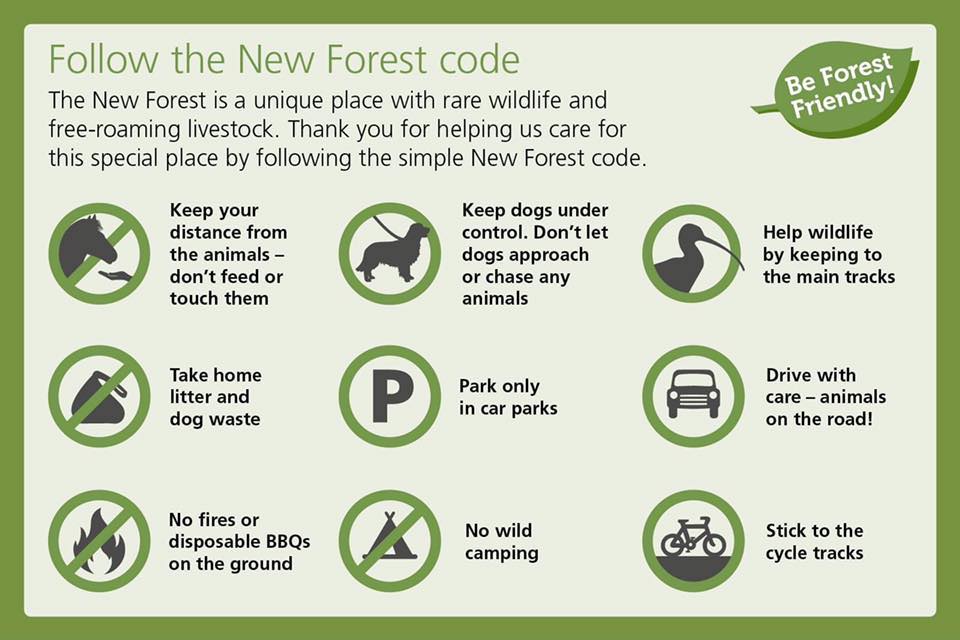 This was a welcome shift of emphasis. Almost no-one would want to visit a National Park and be told off for inadvertently “breaking the rules”. It is exactly the same when any of us travels to a new place; the fear of getting something wrong is very real. Yet, for years Forestry England and the National Park Authority have shied away from sharing this vital information, in favour of solely positive messages (The most common negative message from Forestry England is when its campsite income is threatened by illegal wild camping). Clarity on the laws to protect the New Forest is a vital part of opening the landscape to a more diverse range of visitors who will appreciate it. Not knowing the rules is a deterrent to access.
This was a welcome shift of emphasis. Almost no-one would want to visit a National Park and be told off for inadvertently “breaking the rules”. It is exactly the same when any of us travels to a new place; the fear of getting something wrong is very real. Yet, for years Forestry England and the National Park Authority have shied away from sharing this vital information, in favour of solely positive messages (The most common negative message from Forestry England is when its campsite income is threatened by illegal wild camping). Clarity on the laws to protect the New Forest is a vital part of opening the landscape to a more diverse range of visitors who will appreciate it. Not knowing the rules is a deterrent to access.
These are important lessons from the 2020 lockdown. They come at a crucial time, when we and our partners in the New Forest have a chance to make the future much better than the present. The Government has committed to maintaining the same level of spending as the Common Agricultural Policy in the years immediately after leaving the European Union. This is a once-in-a-lifetime chance to ensure that the New Forest really is a protected landscape; in name and in practice.
Tony Hockley
Chair, New Forest Commoners Defence Association
18th May 2020
UPDATE: Following this blog posting Forestry England decided to bring its keepers and other operational staff back from the furlough funded by the government Coronavirus Job Retention Scheme, and the National Park Authority decided to allow its small team of rangers to return to the work of public engagement in the New Forest.

Members Login
 Latest Tweets
Latest Tweets
Follow us
@realnewforest 4h
Icilibus sam quas aut eriatem nume corepta auta conet officaborem quodi corepta auta conet officaborem quodi apernat ectlpa dolorpiaecus.
@realnewforest 4h
Icilibus sam quas aut eriatem nume corepta auta conet officaborem quodi corepta auta conet officaborem quodi apernat ectlpa dolorpiaecus.
@realnewforest 4h
Icilibus sam quas aut eriatem nume corepta auta conet officaborem quodi corepta auta conet officaborem quodi apernat ectlpa dolorpiaecus.
With thanks for support from



Error: Contact form not found.
